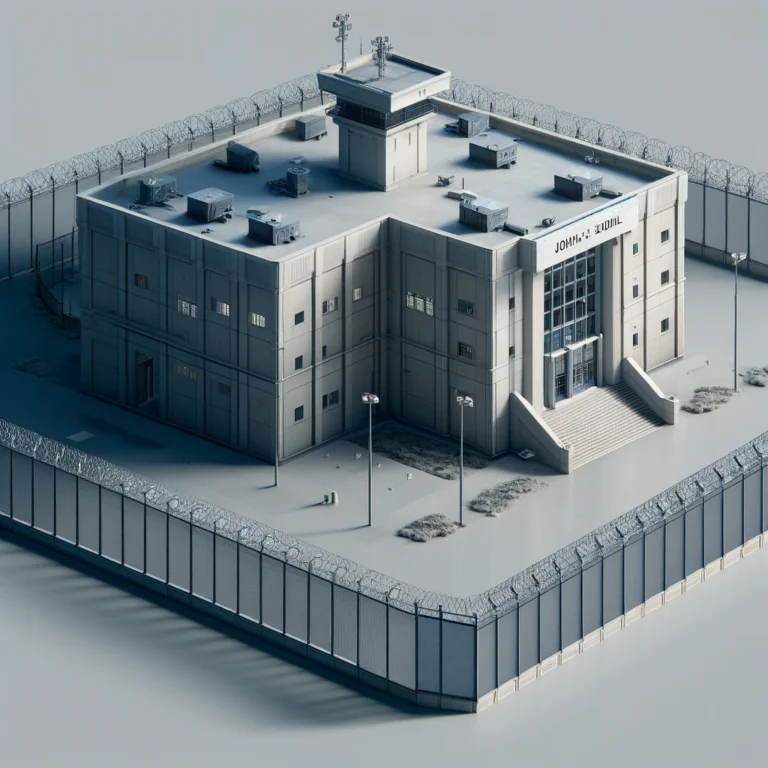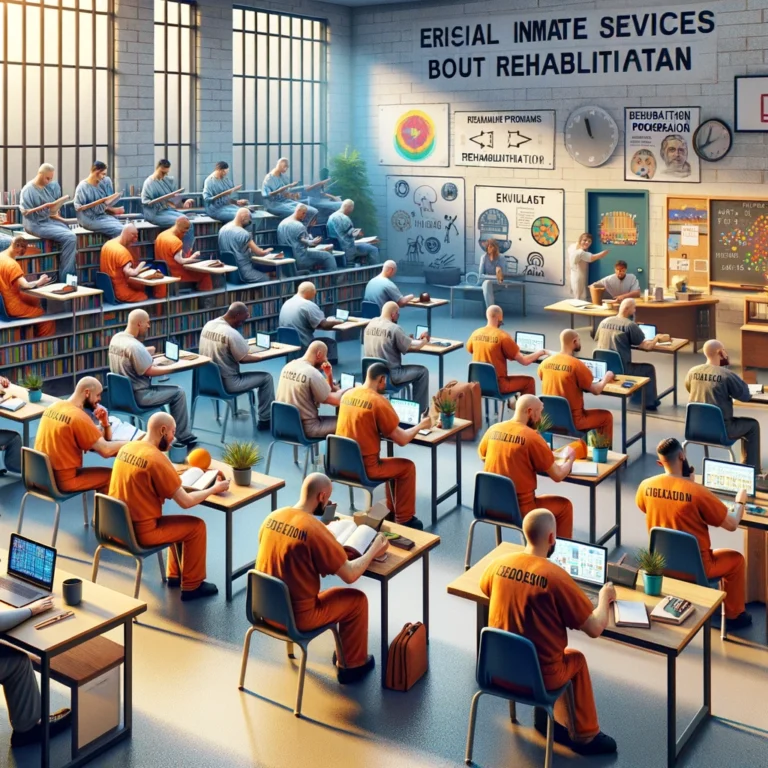John J. Zunino Facility: San Joaquin County Inmate Custody
Table of Contents
- Introduction
- Informative List
- The Role of the John J. Zunino Facility
- Conclusion
- Frequently Asked Questions (FAQs)
- Key Takeaways

Located in the heart of French Camp, California, the John J. Zunino Facility stands as a central hub for inmate custody in San Joaquin County, serving a similar purpose to facilities in counties like Lassen County and Humboldt County. It plays a crucial role in the detention and rehabilitation process within the region, serving as the county’s primary correctional facility and impacting surrounding areas like Orange County and Los Angeles County. Operated by the San Joaquin County Sheriff’s Office, this detention center is more than just a place of incarceration; it’s a comprehensive environment designed to support inmates through various stages of their criminal justice journey.
Informative List
The following list outlines the critical elements related to the John J. Zunino Facility, focusing on significant keywords that describe the institution, its processes, and its connections with other counties and systems:
- CA: California, where the facility is located, including notable counties like Imperial County and Riverside County.
- Sheriff: The San Joaquin County Sheriff’s Office, which operates the facility
- Detention Facility: A location designed for incarcerating individuals
- County Detention/County Correctional Facility: The primary type of institution in San Joaquin County, akin to those found in Tulare County and Del Norte County.
- 209: Area code for the region
- El: Short for French Camp’s El Dorado Street
- Jail Information: Information related to inmates, booking, and visitation
- Jail Facility: The physical structure where inmates are housed
- Incarcerate: To confine or imprison
- 95231: The zip code for French Camp
- Probation: A form of supervised release or community service for convicted individuals, similar to programs in Santa Clara County and Stanislaus County.
- Residential: Refers to the living quarters within the facility, often compared to those in counties like Humboldt County and Lassen County for their structured environment.
- Work Furlough: A program allowing inmates to work outside the jail while serving their sentence
- California County: Includes multiple counties in California, such as El Dorado County, Imperial County, San Diego County, San Luis Obispo County, Orange County, Madera County, Los Angeles County, Calaveras County, and Riverside County.
- Custody Division: The department within the Sheriff’s Office that manages inmate custody
- Various Counties: El Dorado, Fresno, Kern, Imperial, San Diego, Kern County, Fresno County, and others
The Role of the John J. Zunino Facility
The John J. Zunino Facility, often referred to as the “main jail,” is a correctional institution responsible for housing pre-trial detainees, those serving shorter sentences, and individuals transitioning through various stages of the legal system. It operates in close collaboration with other San Joaquin County agencies, providing a continuum of services that aim to maintain public safety while supporting inmates’ rehabilitation.
Inmate Population and Capacity
The facility has a rated capacity that aligns with state and community corrections standards, accommodating a significant number of inmates from San Joaquin County and surrounding areas. With its diverse inmate population, the John J. Zunino Facility houses offenders of various backgrounds and offenses, each with unique needs and circumstances.
Booking and Intake Process
When an individual is arrested within San Joaquin County, they are typically processed at the John J. Zunino Facility. This booking process involves assigning a unique booking number to each inmate, collecting personal information, and conducting a thorough search for contraband. The facility’s booking area is equipped with state-of-the-art technology to ensure accurate and efficient processing.
Inmates are then classified based on their risk level, sentence length, and other factors, including their origin from counties like Los Angeles County or Riverside County. This classification process, akin to systems used in Sierra County and Humboldt County, helps determine where they will be housed within the facility and what type of programs they will have access to during their stay.
Inmate Services and Programs
The John J. Zunino Facility goes beyond essential detention by offering a range of programs and services designed to support inmates’ rehabilitation and reintegration into society. These programs address various aspects of inmates’ lives, including education, substance abuse treatment, parenting, and conflict resolution. The facility also provides access to commissary purchases, allowing inmates to buy personal items and snacks.

One notable feature in Sierra County and Yuba County is the work program, which allows inmates to gain valuable skills and work experience during their time in custody. This program not only helps inmates develop a sense of responsibility but also prepares them for successful reentry into the workforce upon release, similar to initiatives seen in Santa Clara County and Stanislaus County.
Visitation and Communication
Family and loved ones play a crucial role in the rehabilitation process, a belief upheld by the John J. Zunino Facility in San Joaquin County, as well as correctional facilities in Santa Clara County and Napa County, by offering visitation hours and various means of communication. Visitors can meet with inmates during designated business hours, and the facility has a modern lobby with kiosks for check-in. Telephone services, a critical component for maintaining family ties, are also available in correctional facilities across counties like Yuba County and Del Norte County, allowing inmates to maintain contact with their families and legal representatives.
Community Collaboration and Partnerships
The John J. Zunino Facility collaborates closely with various agencies and community partners to provide comprehensive services to inmates. These partnerships include programs for substance abuse treatment, conflict resolution, and even parenting classes. By working with local organizations, the facility aims to create a supportive environment that fosters positive change among its inmate population.
Inmate Release and Reintegration
Upon completion of their sentence or successful completion of a work program, inmates are released from the John J. Zunino Facility. The facility takes steps to ensure a smooth transition back into the community, providing information on resources and support services that can help inmates reintegrate successfully. The goal is to reduce recidivism by equipping inmates with the tools they need to rebuild their lives outside the correctional system.
Conclusion
The John J. Zunino Facility in San Joaquin County plays a pivotal role in the region’s criminal justice system, impacting nearby counties like El Dorado County and Imperial County. As a county jail and correctional facility, it is responsible for not only housing inmates but also providing them with opportunities for personal growth and development. Through its diverse programs, collaborative partnerships, and commitment to inmate rehabilitation, the John J. Zunino Facility aims to contribute to a safer community and a more effective correctional system.
Frequently Asked Questions (FAQs)
Here are some common questions and answers related to the John J. Zunino Facility, serving counties such as San Diego County and Los Angeles County.
- Q: What is the primary role of the John J. Zunino Facility?
- A: It serves as San Joaquin County’s central detention and correctional facility, housing pre-trial detainees, short-term inmates, and those in various stages of the legal system, including individuals from Madera County and Calaveras County.
- Q: How do I find information about an inmate at the John J. Zunino Facility?
- A: You can use the inmate locator provided by the San Joaquin County Sheriff’s Office to search for inmates by their name, booking number, or other identifiers.
- Q: What programs are available to inmates at the John J. Zunino Facility, particularly those from counties such as San Luis Obispo County and Madera County?
- A: The facility offers various programs, including work programs, substance abuse treatment, conflict resolution, and parenting classes.
- Q: What is the visitation policy at the John J. Zunino Facility?
- A: Visitation is allowed during designated business hours. Family and loved ones can meet with inmates in the lobby area, which is equipped with kiosks for check-in.
Principal highlights
To summarize, here are the key points to remember about the John J. Zunino Facility:
- Multi-Function Facility: It serves as a correctional facility, pre-trial detention center, and inmate custody division, working in collaboration with other California counties.
- Inmate Programs and Services: The facility offers a wide range of programs to support inmate rehabilitation, including work furlough, substance abuse treatment, and education.
- Community Collaboration: The facility collaborates with various community partners to provide comprehensive services to inmates, aiming to reduce recidivism and encourage successful reintegration into society.
- Communication and Visitation: Inmates have access to communication tools, and visitation is available during designated times, promoting family support and engagement.
